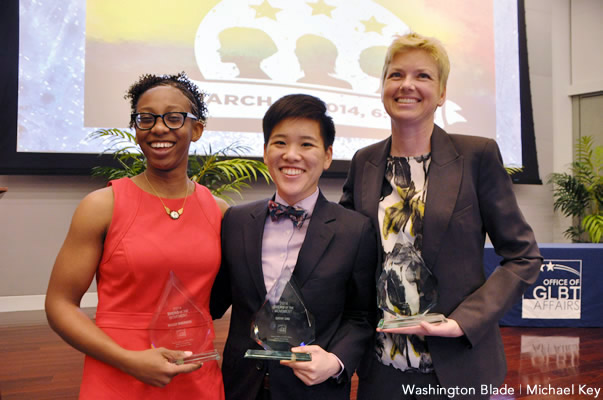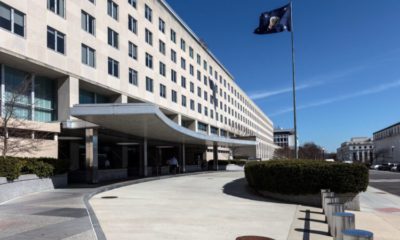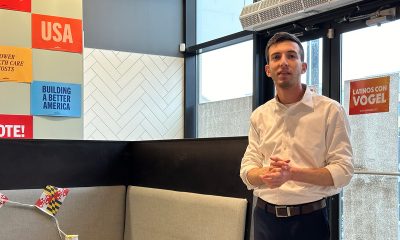homepage news
EXCLUSIVE: CDC chief ‘totally confident’ in plan to beat HIV by 2030
Redfield promote Trump initiative in exclusive Blade interview


A top Trump health official leading the charge on the administration’s effort to end the HIV epidemic by 2030 said Thursday he’s “totally confident” about achieving the ambitious goal.
Robert Redfield, director of Centers for Disease Control & Prevention, made the remarks during an exclusive interview with the Washington Blade on the initiative and the continued stigma facing the LGBT community in health settings.
President Trump announced the initiative during his State of the Union address, pledging to seek resources to end the HIV/AIDS epidemic by 2030. The subsequent budget request to Congress sought $300 million for the first year of the initiative (while simultaneously seeking cuts to Medicare and Medicaid, programs on which many people with HIV rely).
Top health officials within the administration, Redfield said, developed the initiative and submitted the proposal to Secretary of Health & Human Services Alex Azar, who in turn submitted the plan to Trump in time for his State of the Union address.
“We presented that initiative to our secretary of health, who has fully embraced it as one of his major priorities,” Redfield said. “He was successful in presenting this to the president, who was also very committed and engaged, but I don’t know the actual process of how words get into his speech.”
Although the administration is also seeking to roll back the Affordable Care Act and to cut Medicare and Medicaid, Redfield said he doesn’t think changes to other health programs will affect the main HIV initiative.
“At least for individuals who are at risk for HIV infection or who have HIV infection, these persons will get access to the medical and preventive care independent of other issues they may come about related to the broader health care issues of our nation,” Redfield said.
Redfield, who worked as a medical researcher at the Walter Reed Army Medical Center at the height of the HIV/AIDS epidemic in the 1980s, also marveled at the advancements in treatment and prevention that he said enables the plan to beat HIV/AIDS by 2030.
“[I was] involved in the first trial to ever use AZT, and I remember how ecstatic we all were when we increased survival from 10 months to 26 months,” Redfield said. “Who would believe today that when you’re 20 years old and you get HIV, you can expect to live between the age of 70 and 75?”
Read the full interview below:
Washington Blade: Now that the budget request is out, how confident are you the administration can achieve President Trump’s goal of ending new HIV infections by 2030?
Robert Redfield: I’m totally confident that we’re going to succeed. And, again, I just want to clarify the goal is to end the HIV epidemic by 2030, and so, what that technically means is to bring new infections down to less than one per 100,000, so that would be less than 3,000. Obviously, we would like to do all the way down to zero, but the goal is to end the AIDS epidemic in America by decreasing new infections below 1 infection per 100,000 group of people.
Blade: The president announced the initiative during his State of the Union address. What was the process like to make sure those words would be included in the speech?
Redfield: Well, I really don’t know that process as much other than I can say that this was a very thoughtful initiative that was put together by key principals from CDC, NIH, HRSA, the Indian Health Services, the assistant secretary of health, who really did work together for months to look in detail whether we felt that the targeted initiative, a highly focused initiative could meet the goal of bringing the HIV epidemic to an end.
Once we were confident among ourselves that, as you know well, Chris, we had the tools, whether it’s successful treatment to get people diagnosed and treated, virally suppressed, so not only they can live a full life, but also, importantly, that if you’re virally suppressed that…you would no longer be able to transmit, and if you could couple that with getting people at risk for HIV infections in comprehensive prevention programs, including PrEP, that the epidemic would come to an end.
And the question was how would we do that. And when we looked at the new infections in America that have stabilized around 40,000 and just spotted the infections where they occurred, we noticed that over half the infections were in 48 counties and D.C. and San Juan — which is just 50 jurisdictions out of over 3,000, so immediately if you look at that map, everyone said, “Wait a minute. This is highly focused. We can do this.”
It’s also highly focused, as you know, demographically that most of the new infections that we’re seeing are in men who have sex with men, and not just men who have sex with men, but African-American and Latino men, and not just African-American and Latino men, but men that are between the ages of 25 and 34. So it’s very geographically focused and it’s very demographically focused.
So we came together with an initiative, which we all believed was no longer aspirational, but was practical. We presented that initiative to our secretary of health, who has fully embraced it as one of his major priorities. He was successful in presenting this to the president, who was also very committed and engaged, but I don’t know the actual process of how words get into his speech. Clearly, I do know how the secretary became very committed and made this one of the major objectives of his tenure as secretary and he presented it to the president. He wanted to make it one of the major initiatives of his presidency.
Blade: The president’s budget request calls for $300 million for the initiative. Will future requests seek similar resources, or was that a one-time request?
Redfield: As you know the president’s budget request, as you said, nearly $300 million, $291 million. That was the budget that the experts within the department, the agencies that I mentioned, thought that we needed in Year One.
This is a multi-year initiative, and people can anticipate that there’ll be additional requests in a second, third, fourth and fifth year. And people can anticipate that those resources obviously will be — requested will be significantly greater than the resources that were in the president’s budget for 2020.
Blade: The budget also requests an $845 billion cut to Medicare and seeks to roll back Medicaid as it was expanded under the Affordable Care Act. Could the administration achieve the 2030 goal if Congress agrees to the cuts as well?
Redfield: You know, Chris, that’s outside my expertise other than to say that I am confident, as are the other leaders, confident that within the president’s HIV initiative, we will have the resources needed to make sure that all — I’m going to keep saying that “all,” because people when I say “all,” they say but what about these people? I say all people with HIV infection we will work to get diagnosed, engaged in care and on retroviral therapy and virally suppressed.
And we did our current calculations with a five-year budget outline and eventually, as you know, it’s a 10-year program, but we did outline the first five years. We did it assuming that there was no significant change in expanded Medicaid and any change in services. The second thing we did is [ensure] all people at risk for HIV infection would get access to comprehensive prevention strategy, including PrEP.
So, at least for individuals who are at risk for HIV infection or who have HIV infection, these persons will get access to the medical and preventive care independent of other issues they may come about related to the broader health care issues of our nation.
Blade: You were working on HIV/AIDS drug development at the height of the epidemic in the 1980s and 90s. How would you compare HIV/AIDS treatment at that time to what we have now?
Redfield: You know, it’s really been a gift to watch the power of science apply. When I started as an HIV physician in 1983, many of my patients had a limited life expectancy. I learned as a physician just to try to take care of them to the best of my ability, but all too often, that ended in death way too prematurely. [I was] involved in the first trial to ever use AZT, and I remember how ecstatic we all were when we increased survival from 10 months to 26 months. Who would believe today that when you’re 20 years old and you get HIV, you can expect to live between the age of 70 and 75?
When we originally had therapy, as you know, and went through single lymphocyte, dual lymphocyte, then eventually the protease inhibitors came and we had many patients that were taking 20, 30, 35 pills a day, three times a day, significant toxicity, major side effects and frequently at the end of the day, half the patients developed resistance and therapy failed.
There was a time actually when I was involved in Baltimore after I left the military that I was considered one of the doctors of last resort. People would come with multi-drug resistance virus, resistant to three or four classes of drugs. We would try to do the best and keep their T-cell count from falling and just do the best we could.
Today, the therapy we have is single pill or two pills once a day. I like to use the term it’s pretty bulletproof, meaning the drugs really work and the virus really doesn’t have the ability to escape them the way it did in the old days. Drug resistance is no longer a real threat, particularly with some of the major drugs that are used today. The side effects now on these drugs are really minimal, close to the side effects of water. So today we have really very simple, very successful, very easy-to-take therapy that has minimum side effects, limited toxicity so that people can expect to take them for 20, 30, 40 or 50 years and can expect being able to have a high quality of life.
You know, and you follow this close, there’s even advancements in therapy that are coming beyond that in terms of some of the long-acting therapies, long-acting injectables. It probably won’t be long to some people who don’t even like taking a pill a day to be given an alternative option to take some type of injection, or even people are looking at long-acting implants that will be able to basically provide the treatment that they need.
It’s clear that we will need chronic anti-retroviral therapy to maintain viral suppression. I do think therapy strategies continue to be worked on, science is working hard trying to find ways we can cure HIV infection. I think those days will come. We’ve seen several cases already, but I think you’ll see strategies develop that are actually more applicable.
So, I think it’s just an amazing testament to the power of science and I’d like to say it to you: A big part of it was obviously the investment and the science that was done in the private sector, but probably the most important investment was the courage of the young men and women and persons in the community that had the courage to participate in the clinical research.
So that we actually went from a day when most people with HIV infection kind of looked at a difficult clinical course that too often ended in premature death and today we’re looking at actual lifetime, we’re even looking at the ability to tell young people that are HIV infected, we can actually not only help you live a natural lifetime, we can actually make it so you’re no longer infectious to those you care about or those you have sexual relationships with. And who would have believed that?
Again, I know you reach out to a large community, a lot of credit goes to the community, the early community that had the courage to participate in clinical research.
Blade: Why has HIV/AIDS been such a personal priority for you?
Redfield: You know, that’s an interesting question because it really, really has. It wasn’t initially because of any insight. I was asked…my job in the military was to look at infectious diseases…that were viral that might be transmitted by blood, or sexually transmitted diseases. Rapidly, obliviously, it was clear that HIV fit into that group.
When I started prior to the understanding of the cause, taking care of the men and women that were in the military with HIV infection at a time when we didn’t know what it was, I’ll tell you the truth, they rapidly became my friends. It was a real challenge. I went into infectious disease rather than oncology because I didn’t think I could deal with my patients dying all the time. I eventually ended up with HIV [care] and becoming a dominant provider of HIV care.
Really, until I became CDC director last year, I cared for many, many, many patients and I say initially because I got to see it and I really did believe that, systemically, science could do this. I worked with really good scientists, I got to be part of the team that originally proved the causation between AIDS and HIV. I got to work on some of the earlier therapies as you mentioned. I saw incremental improvement, then it got applied to individual lives and made a difference.
I could still remember very clearly the last patient that I had that missed out on protease inhibitors…If she could have just lived another six weeks, she’d probably be alive today. But I think it was that. And I saw science making a difference. I think that’s why now I want to see those tools I would never believed even 10 years ago, we wouldn’t have been able to dream to end the AIDS epidemic, the fact those tools today, we have them. I think many of us for years were hoping there’d be a historical effort in the United States to do this, and we’re just honored and appreciative that President Trump has chosen to use this as a major initiative, Secretary Azar, and say let’s apply that science and let’s get this thing to the finish.
Blade: Let’s go back to the plan. There’s concern that it addressed the biomedical aspects of HIV/AIDS, but ignores the social determinants of health. What assurances can you make homophobia and transphobia won’t be a factor in seeking to treat HIV patients?
Redfield: Chris, this is a critical, critical point. Succeeding in ending the HIV/AIDS epidemic in America is not limited to the biomedical success. I think the first thing I will say is I feel very strongly that stigma in all its forms are the enemy of the public health. That’s obviously even more critical in the drug overdose, drug use, drug misuse epidemic that were dealing with. I think it’s clear that many of the people that haven’t gotten access to diagnosis or have been linked to care and stay in care, or haven’t gotten access to comprehensive prevention strategies, many of these reasons that has not happened are defined in what you highlight as factors that are really social determinants of health.
One thing I’ll say about this initiative: It’s not a top-down initiative. Each of these jurisdictions are going to have to come up with a different plan and we said it clearly: It’s a plan that’s for the community, by the community, in the community. I will say the community is going to be the most critical lynchpin of this plan because many of us public health leaders, or many of the academic leaders, probably aren’t the critical experts to understand what it is that community needs to get diagnosed in certain communities, or what it is they need linked to care.
I’ll be the first to say that housing is part of the medical issue. I’ll be first to say that there are a number of social determinants, so the community is going to be critical, and groups like your paper are going to be important because probably the most critical group that can help this program be successful is the persons who actually become HIV-infected in the first couple years.
I think we need to…have a detailed, what I call a social autopsy to understand what was it that didn’t work so this individual didn’t get access to the prevention efforts that we know work. What was it that made this individual’s sexual partner not get access to HIV treatment so they could be virally suppressed and undetectable? It really is building the trust and partnership with the community to be a part of this initiative. When I say this is our initiative from CDC, or our initiative from the U.S. government, it’s our initiative for the entire HIV community to finally bring an end to the HIV epidemic as we know it.
And the only thing that will prevent it is if we don’t get the full participation of the community, which I’m confident we will as we move forward and build the trust of the community that we’re serious about making sure the community does get — all people can get access to effective therapy, all people in the community can access to comprehensive strategies.
Blade: You talked about stigma being contrary to the interest of public health. Do you think that stigma based on homophobia and transphobia still persists in medicine and do you think the military’s transgender policy, the ban, which is framed as a broad-based medical policy, is evidence of stigma based on transphobia?
Redfield: What I can say is that I do believe that stigma still exists in the HIV epidemic, and particularly, you see it in transgender persons and having clinical settings that people feel comfortable accessing. We clearly see it in men who have sex with men, particularly the African-American and Latino men that have highly religious structures that have seemed to reinforce stigma.
We’ve also seen it, Chris, in one of the areas that I’ve seen in some of the surveys we’ve done about men who have sex with men about their own feeling about themselves. There is sadly still self-stigmatization that people have that we need to get rid of. People need to feel proud of who they are and not feel that they’re stigmatized either internally or externally, so it’s still there.
I will tell you, it’s nothing compared to trying to confront the stigma dealing with drug misuse and drug use, but it’s there and needs to be confronted and it needs to be peeled away so it doesn’t impact individuals from gaining access to the care and treatment and prevention services that they deserve to have free access to.
Blade: And is the military’s transgender policy an example of that?
Redfield: I really am not going to comment directly on that. I think that what the military’s decisions are — from a public health point of view we need to embrace transgender persons so that they can get access to care and treatment prevention services that they need, and I think you’ll see this initiative accomplish that. We need to embrace men who have sex with men that feel stigmatized so that they can be in clinical settings.
The one thing I will say that’s important that we need the community, all too often we develop these clinical programs where the illness is for the patients to come to us on our terms. I’ve challenged the community and I’ve reached out and I’ll continue to reach for the community to develop innovative ways to provide care and treatment and prevention services to the community where they are and I think, again, central to this, is the importance that stigma has no place in our efforts to bring an end to the AIDS epidemic and the president’s initiative.
homepage news
Honoring the legacy of New Orleans’ 1973 UpStairs Lounge fire
Why the arson attack that killed 32 gay men still resonates 50 years later
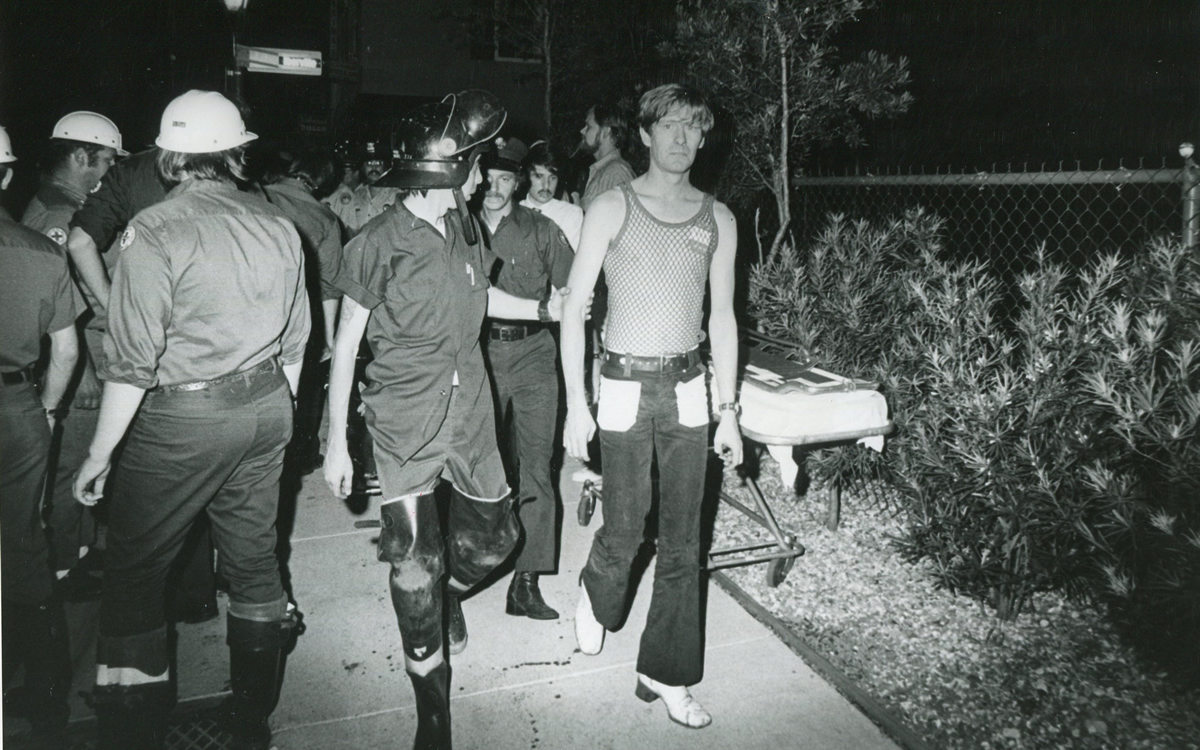
On June 23 of last year, I held the microphone as a gay man in the New Orleans City Council Chamber and related a lost piece of queer history to the seven council members. I told this story to disabuse all New Orleanians of the notion that silence and accommodation, in the face of institutional and official failures, are a path to healing.
The story I related to them began on a typical Sunday night at a second-story bar on the fringe of New Orleans’ French Quarter in 1973, where working-class men would gather around a white baby grand piano and belt out the lyrics to a song that was the anthem of their hidden community, “United We Stand” by the Brotherhood of Man.
“United we stand,” the men would sing together, “divided we fall” — the words epitomizing the ethos of their beloved UpStairs Lounge bar, an egalitarian free space that served as a forerunner to today’s queer safe havens.
Around that piano in the 1970s Deep South, gays and lesbians, white and Black queens, Christians and non-Christians, and even early gender minorities could cast aside the racism, sexism, and homophobia of the times to find acceptance and companionship for a moment.
For regulars, the UpStairs Lounge was a miracle, a small pocket of acceptance in a broader world where their very identities were illegal.
On the Sunday night of June 24, 1973, their voices were silenced in a murderous act of arson that claimed 32 lives and still stands as the deadliest fire in New Orleans history — and the worst mass killing of gays in 20th century America.
As 13 fire companies struggled to douse the inferno, police refused to question the chief suspect, even though gay witnesses identified and brought the soot-covered man to officers idly standing by. This suspect, an internally conflicted gay-for-pay sex worker named Rodger Dale Nunez, had been ejected from the UpStairs Lounge screaming the word “burn” minutes before, but New Orleans police rebuffed the testimony of fire survivors on the street and allowed Nunez to disappear.
As the fire raged, police denigrated the deceased to reporters on the street: “Some thieves hung out there, and you know this was a queer bar.”
For days afterward, the carnage met with official silence. With no local gay political leaders willing to step forward, national Gay Liberation-era figures like Rev. Troy Perry of the Metropolitan Community Church flew in to “help our bereaved brothers and sisters” — and shatter officialdom’s code of silence.
Perry broke local taboos by holding a press conference as an openly gay man. “It’s high time that you people, in New Orleans, Louisiana, got the message and joined the rest of the Union,” Perry said.
Two days later, on June 26, 1973, as families hesitated to step forward to identify their kin in the morgue, UpStairs Lounge owner Phil Esteve stood in his badly charred bar, the air still foul with death. He rebuffed attempts by Perry to turn the fire into a call for visibility and progress for homosexuals.
“This fire had very little to do with the gay movement or with anything gay,” Esteve told a reporter from The Philadelphia Inquirer. “I do not want my bar or this tragedy to be used to further any of their causes.”
Conspicuously, no photos of Esteve appeared in coverage of the UpStairs Lounge fire or its aftermath — and the bar owner also remained silent as he witnessed police looting the ashes of his business.
“Phil said the cash register, juke box, cigarette machine and some wallets had money removed,” recounted Esteve’s friend Bob McAnear, a former U.S. Customs officer. “Phil wouldn’t report it because, if he did, police would never allow him to operate a bar in New Orleans again.”
The next day, gay bar owners, incensed at declining gay bar traffic amid an atmosphere of anxiety, confronted Perry at a clandestine meeting. “How dare you hold your damn news conferences!” one business owner shouted.
Ignoring calls for gay self-censorship, Perry held a 250-person memorial for the fire victims the following Sunday, July 1, culminating in mourners defiantly marching out the front door of a French Quarter church into waiting news cameras. “Reverend Troy Perry awoke several sleeping giants, me being one of them,” recalled Charlene Schneider, a lesbian activist who walked out of that front door with Perry.
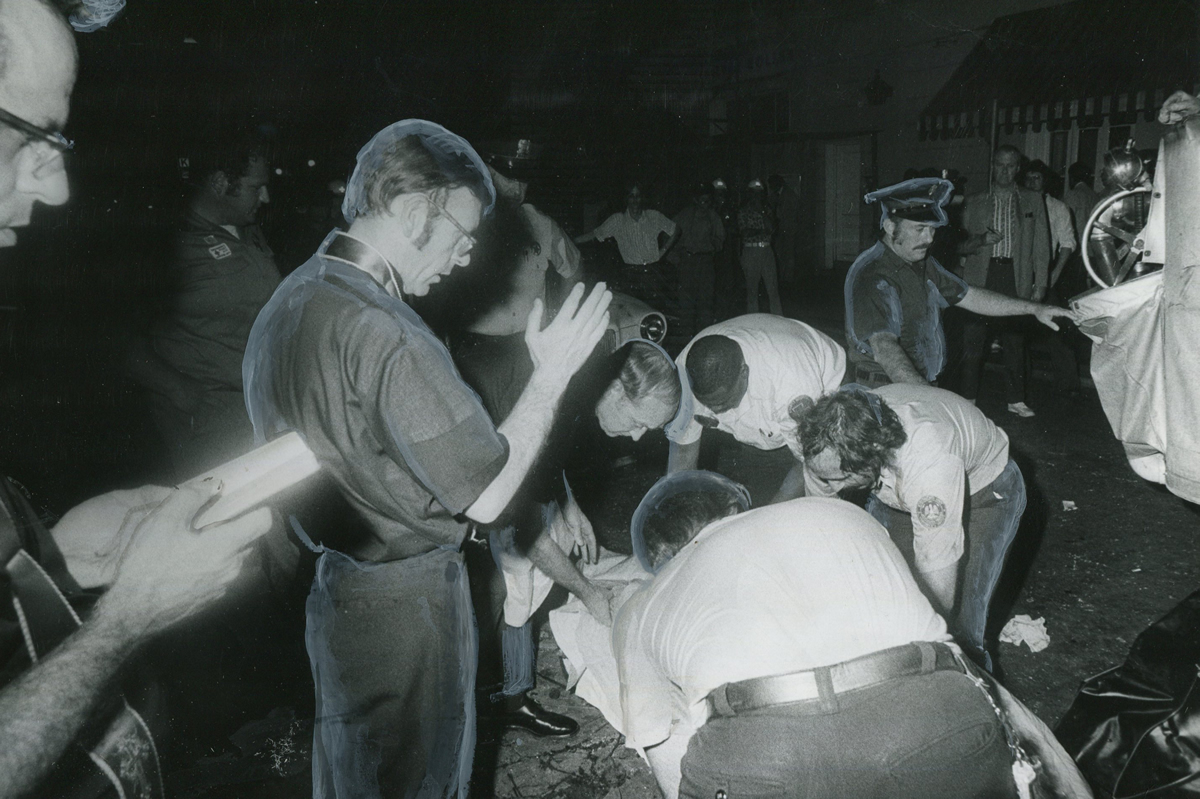
Esteve doubted the UpStairs Lounge story’s capacity to rouse gay political fervor. As the coroner buried four of his former patrons anonymously on the edge of town, Esteve quietly collected at least $25,000 in fire insurance proceeds. Less than a year later, he used the money to open another gay bar called the Post Office, where patrons of the UpStairs Lounge — some with visible burn scars — gathered but were discouraged from singing “United We Stand.”
New Orleans cops neglected to question the chief arson suspect and closed the investigation without answers in late August 1973. Gay elites in the city’s power structure began gaslighting the mourners who marched with Perry into the news cameras, casting suspicion on their memories and re-characterizing their moment of liberation as a stunt.
When a local gay journalist asked in April 1977, “Where are the gay activists in New Orleans?,” Esteve responded that there were none, because none were needed. “We don’t feel we’re discriminated against,” Esteve said. “New Orleans gays are different from gays anywhere else… Perhaps there is some correlation between the amount of gay activism in other cities and the degree of police harassment.”
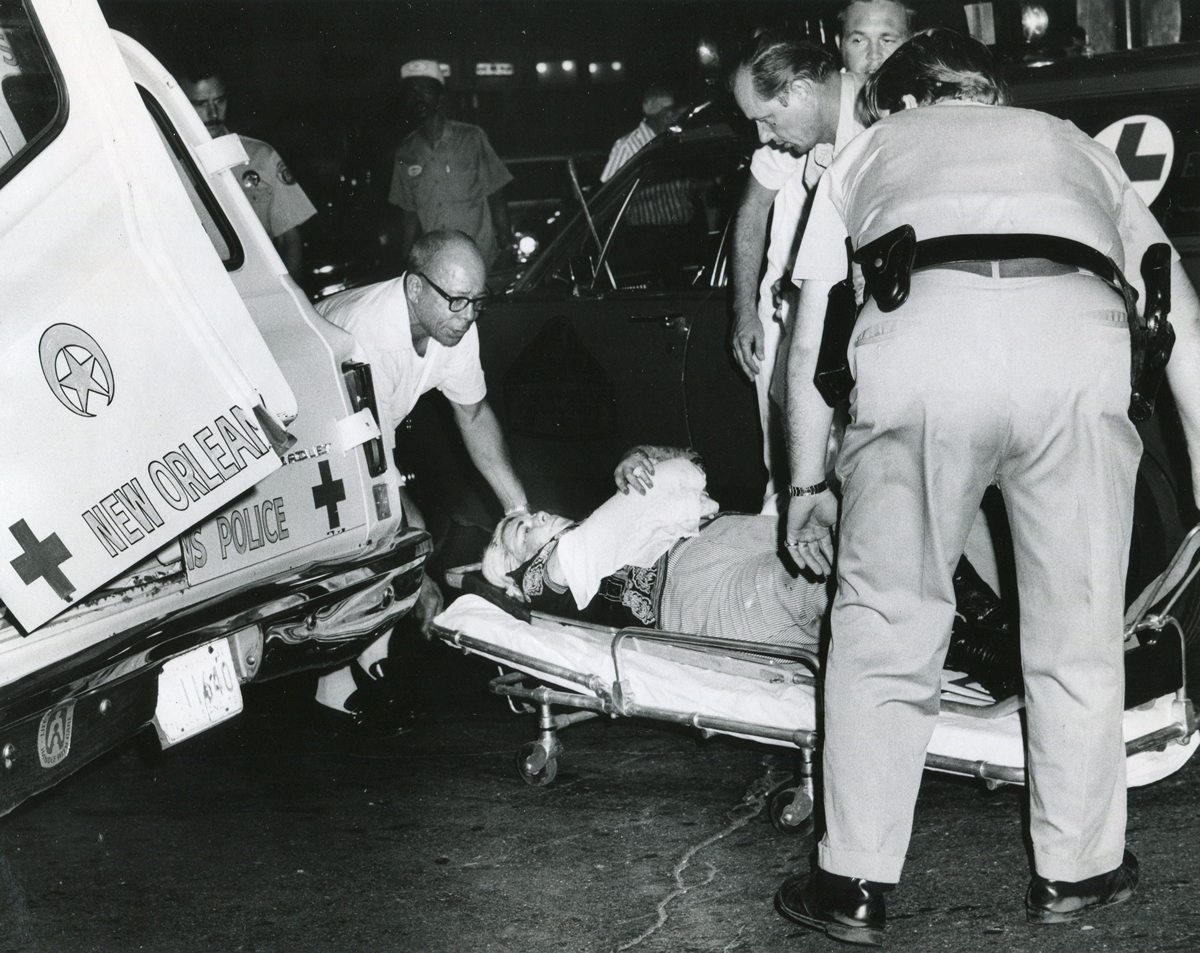
An attitude of nihilism and disavowal descended upon the memory of the UpStairs Lounge victims, goaded by Esteve and fellow gay entrepreneurs who earned their keep via gay patrons drowning their sorrows each night instead of protesting the injustices that kept them drinking.
Into the 1980s, the story of the UpStairs Lounge all but vanished from conversation — with the exception of a few sanctuaries for gay political debate such as the local lesbian bar Charlene’s, run by the activist Charlene Schneider.
By 1988, the 15th anniversary of the fire, the UpStairs Lounge narrative comprised little more than a call for better fire codes and indoor sprinklers. UpStairs Lounge survivor Stewart Butler summed it up: “A tragedy that, as far as I know, no good came of.”
Finally, in 1991, at Stewart Butler and Charlene Schneider’s nudging, the UpStairs Lounge story became aligned with the crusade of liberated gays and lesbians seeking equal rights in Louisiana. The halls of power responded with intermittent progress. The New Orleans City Council, horrified by the story but not yet ready to take its look in the mirror, enacted an anti-discrimination ordinance protecting gays and lesbians in housing, employment, and public accommodations that Dec. 12 — more than 18 years after the fire.
“I believe the fire was the catalyst for the anger to bring us all to the table,” Schneider told The Times-Picayune, a tacit rebuke to Esteve’s strategy of silent accommodation. Even Esteve seemed to change his stance with time, granting a full interview with the first UpStairs Lounge scholar Johnny Townsend sometime around 1989.
Most of the figures in this historic tale are now deceased. What’s left is an enduring story that refused to go gently. The story now echoes around the world — a musical about the UpStairs Lounge fire recently played in Tokyo, translating the gay underworld of the 1973 French Quarter for Japanese audiences.
When I finished my presentation to the City Council last June, I looked up to see the seven council members in tears. Unanimously, they approved a resolution acknowledging the historic failures of city leaders in the wake of the UpStairs Lounge fire.
Council members personally apologized to UpStairs Lounge families and survivors seated in the chamber in a symbolic act that, though it could not bring back those who died, still mattered greatly to those whose pain had been denied, leaving them to grieve alone. At long last, official silence and indifference gave way to heartfelt words of healing.
The way Americans remember the past is an active, ongoing process. Our collective memory is malleable, but it matters because it speaks volumes about our maturity as a people, how we acknowledge the past’s influence in our lives, and how it shapes the examples we set for our youth. Do we grapple with difficult truths, or do we duck accountability by defaulting to nostalgia and bluster? Or worse, do we simply ignore the past until it fades into a black hole of ignorance and indifference?
I believe that a factual retelling of the UpStairs Lounge tragedy — and how, 50 years onward, it became known internationally — resonates beyond our current divides. It reminds queer and non-queer Americans that ignoring the past holds back the present, and that silence is no cure for what ails a participatory nation.
Silence isolates. Silence gaslights and shrouds. It preserves the power structures that scapegoat the disempowered.
Solidarity, on the other hand, unites. Solidarity illuminates a path forward together. Above all, solidarity transforms the downtrodden into a resounding chorus of citizens — in the spirit of voices who once gathered ‘round a white baby grand piano and sang, joyfully and loudly, “United We Stand.”

Robert W. Fieseler is a New Orleans-based journalist and the author of “Tinderbox: the Untold Story of the Up Stairs Lounge Fire and the Rise of Gay Liberation.”
homepage news
New Supreme Court term includes critical LGBTQ case with ‘terrifying’ consequences
Business owner seeks to decline services for same-sex weddings
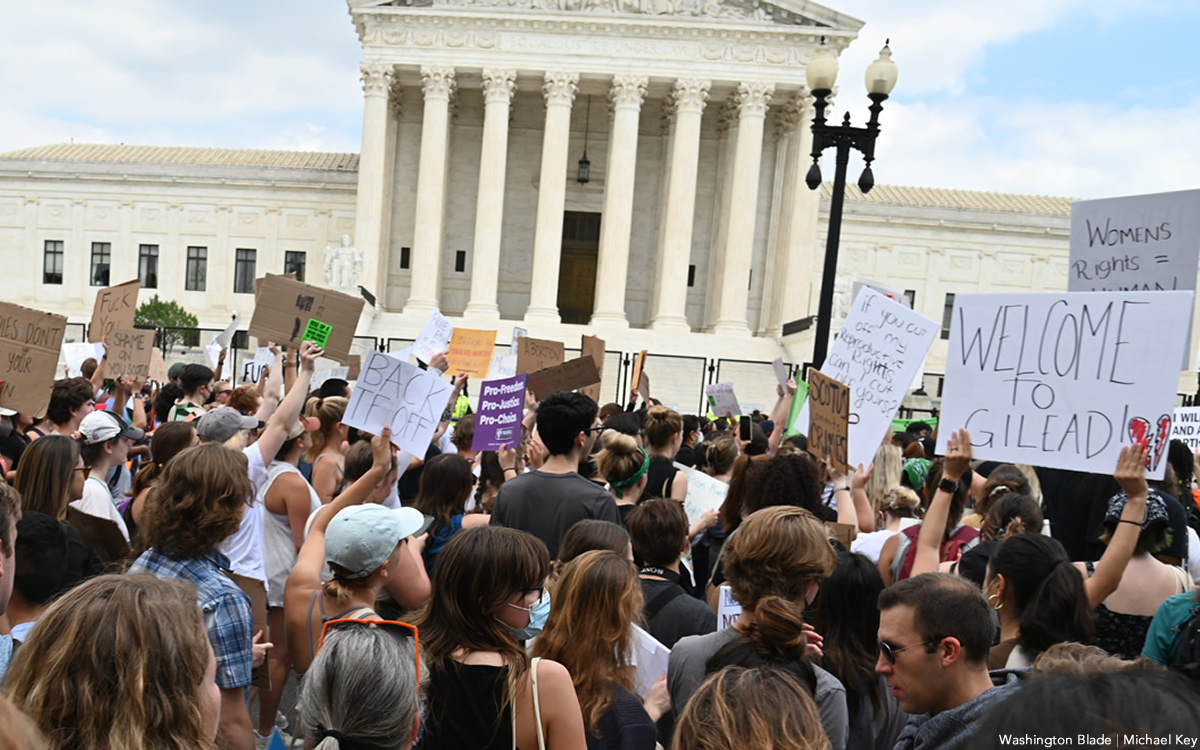
The U.S. Supreme Court, after a decision overturning Roe v. Wade that still leaves many reeling, is starting a new term with justices slated to revisit the issue of LGBTQ rights.
In 303 Creative v. Elenis, the court will return to the issue of whether or not providers of custom-made goods can refuse service to LGBTQ customers on First Amendment grounds. In this case, the business owner is Lorie Smith, a website designer in Colorado who wants to opt out of providing her graphic design services for same-sex weddings despite the civil rights law in her state.
Jennifer Pizer, acting chief legal officer of Lambda Legal, said in an interview with the Blade, “it’s not too much to say an immeasurably huge amount is at stake” for LGBTQ people depending on the outcome of the case.
“This contrived idea that making custom goods, or offering a custom service, somehow tacitly conveys an endorsement of the person — if that were to be accepted, that would be a profound change in the law,” Pizer said. “And the stakes are very high because there are no practical, obvious, principled ways to limit that kind of an exception, and if the law isn’t clear in this regard, then the people who are at risk of experiencing discrimination have no security, no effective protection by having a non-discrimination laws, because at any moment, as one makes their way through the commercial marketplace, you don’t know whether a particular business person is going to refuse to serve you.”
The upcoming arguments and decision in the 303 Creative case mark a return to LGBTQ rights for the Supreme Court, which had no lawsuit to directly address the issue in its previous term, although many argued the Dobbs decision put LGBTQ rights in peril and threatened access to abortion for LGBTQ people.
And yet, the 303 Creative case is similar to other cases the Supreme Court has previously heard on the providers of services seeking the right to deny services based on First Amendment grounds, such as Masterpiece Cakeshop and Fulton v. City of Philadelphia. In both of those cases, however, the court issued narrow rulings on the facts of litigation, declining to issue sweeping rulings either upholding non-discrimination principles or First Amendment exemptions.
Pizer, who signed one of the friend-of-the-court briefs in opposition to 303 Creative, said the case is “similar in the goals” of the Masterpiece Cakeshop litigation on the basis they both seek exemptions to the same non-discrimination law that governs their business, the Colorado Anti-Discrimination Act, or CADA, and seek “to further the social and political argument that they should be free to refuse same-sex couples or LGBTQ people in particular.”
“So there’s the legal goal, and it connects to the social and political goals and in that sense, it’s the same as Masterpiece,” Pizer said. “And so there are multiple problems with it again, as a legal matter, but also as a social matter, because as with the religion argument, it flows from the idea that having something to do with us is endorsing us.”
One difference: the Masterpiece Cakeshop litigation stemmed from an act of refusal of service after owner, Jack Phillips, declined to make a custom-made wedding cake for a same-sex couple for their upcoming wedding. No act of discrimination in the past, however, is present in the 303 Creative case. The owner seeks to put on her website a disclaimer she won’t provide services for same-sex weddings, signaling an intent to discriminate against same-sex couples rather than having done so.
As such, expect issues of standing — whether or not either party is personally aggrieved and able bring to a lawsuit — to be hashed out in arguments as well as whether the litigation is ripe for review as justices consider the case. It’s not hard to see U.S. Chief Justice John Roberts, who has sought to lead the court to reach less sweeping decisions (sometimes successfully, and sometimes in the Dobbs case not successfully) to push for a decision along these lines.
Another key difference: The 303 Creative case hinges on the argument of freedom of speech as opposed to the two-fold argument of freedom of speech and freedom of religious exercise in the Masterpiece Cakeshop litigation. Although 303 Creative requested in its petition to the Supreme Court review of both issues of speech and religion, justices elected only to take up the issue of free speech in granting a writ of certiorari (or agreement to take up a case). Justices also declined to accept another question in the petition request of review of the 1990 precedent in Smith v. Employment Division, which concluded states can enforce neutral generally applicable laws on citizens with religious objections without violating the First Amendment.
Representing 303 Creative in the lawsuit is Alliance Defending Freedom, a law firm that has sought to undermine civil rights laws for LGBTQ people with litigation seeking exemptions based on the First Amendment, such as the Masterpiece Cakeshop case.
Kristen Waggoner, president of Alliance Defending Freedom, wrote in a Sept. 12 legal brief signed by her and other attorneys that a decision in favor of 303 Creative boils down to a clear-cut violation of the First Amendment.
“Colorado and the United States still contend that CADA only regulates sales transactions,” the brief says. “But their cases do not apply because they involve non-expressive activities: selling BBQ, firing employees, restricting school attendance, limiting club memberships, and providing room access. Colorado’s own cases agree that the government may not use public-accommodation laws to affect a commercial actor’s speech.”
Pizer, however, pushed back strongly on the idea a decision in favor of 303 Creative would be as focused as Alliance Defending Freedom purports it would be, arguing it could open the door to widespread discrimination against LGBTQ people.
“One way to put it is art tends to be in the eye of the beholder,” Pizer said. “Is something of a craft, or is it art? I feel like I’m channeling Lily Tomlin. Remember ‘soup and art’? We have had an understanding that whether something is beautiful or not is not the determining factor about whether something is protected as artistic expression. There’s a legal test that recognizes if this is speech, whose speech is it, whose message is it? Would anyone who was hearing the speech or seeing the message understand it to be the message of the customer or of the merchants or craftsmen or business person?”
Despite the implications in the case for LGBTQ rights, 303 Creative may have supporters among LGBTQ people who consider themselves proponents of free speech.
One joint friend-of-the-court brief before the Supreme Court, written by Dale Carpenter, a law professor at Southern Methodist University who’s written in favor of LGBTQ rights, and Eugene Volokh, a First Amendment legal scholar at the University of California, Los Angeles, argues the case is an opportunity to affirm the First Amendment applies to goods and services that are uniquely expressive.
“Distinguishing expressive from non-expressive products in some contexts might be hard, but the Tenth Circuit agreed that Smith’s product does not present a hard case,” the brief says. “Yet that court (and Colorado) declined to recognize any exemption for products constituting speech. The Tenth Circuit has effectively recognized a state interest in subjecting the creation of speech itself to antidiscrimination laws.”
Oral arguments in the case aren’t yet set, but may be announced soon. Set to defend the state of Colorado and enforcement of its non-discrimination law in the case is Colorado Solicitor General Eric Reuel Olson. Just this week, the U.S. Supreme Court announced it would grant the request to the U.S. solicitor general to present arguments before the justices on behalf of the Biden administration.
With a 6-3 conservative majority on the court that has recently scrapped the super-precedent guaranteeing the right to abortion, supporters of LGBTQ rights may think the outcome of the case is all but lost, especially amid widespread fears same-sex marriage would be next on the chopping block. After the U.S. Tenth Circuit Court of Appeals ruled against 303 Creative in the lawsuit, the simple action by the Supreme Court to grant review in the lawsuit suggests they are primed to issue a reversal and rule in favor of the company.
Pizer, acknowledging the call to action issued by LGBTQ groups in the aftermath of the Dobbs decision, conceded the current Supreme Court issuing the ruling in this case is “a terrifying prospect,” but cautioned the issue isn’t so much the makeup of the court but whether or not justices will continue down the path of abolishing case law.
“I think the question that we’re facing with respect to all of the cases or at least many of the cases that are in front of the court right now, is whether this court is going to continue on this radical sort of wrecking ball to the edifice of settled law and seemingly a goal of setting up whole new structures of what our basic legal principles are going to be. Are we going to have another term of that?” Pizer said. “And if so, that’s terrifying.”
homepage news
Kelley Robinson, a Black, queer woman, named president of Human Rights Campaign
Progressive activist a veteran of Planned Parenthood Action Fund
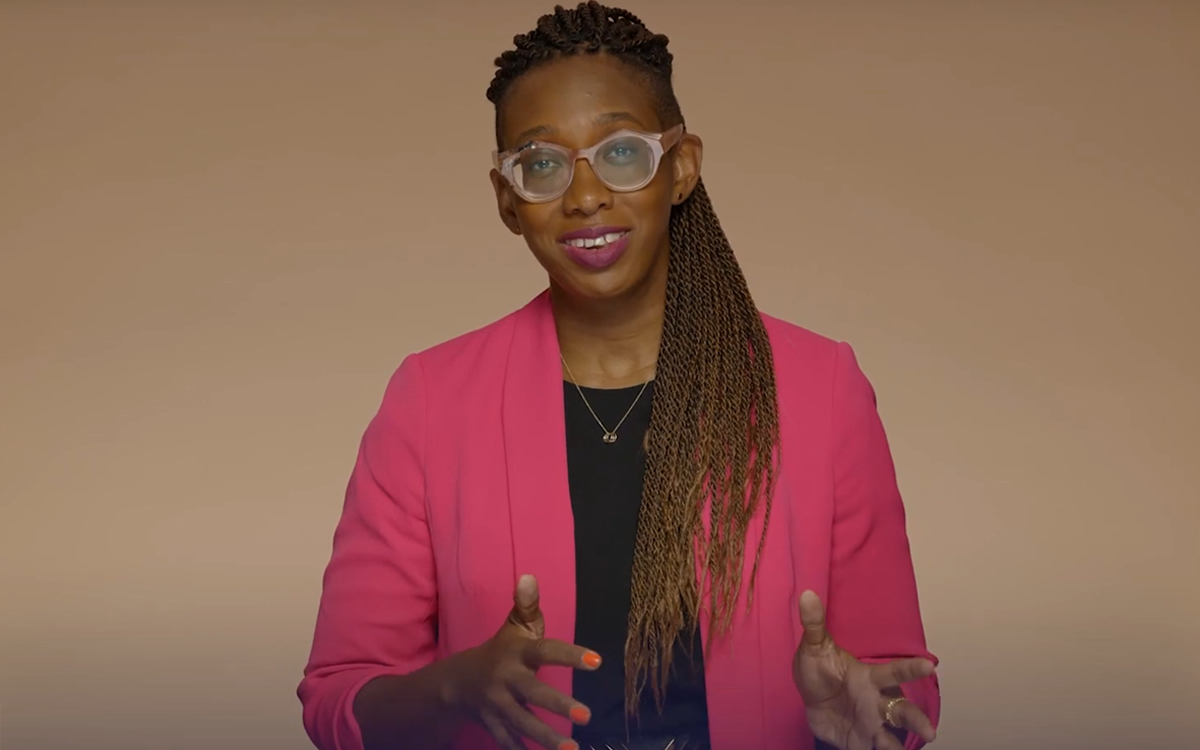
Kelley Robinson, a Black, queer woman and veteran of Planned Parenthood Action Fund, is to become the next president of the Human Rights Campaign, the nation’s leading LGBTQ group announced on Tuesday.
Robinson is set to become the ninth president of the Human Rights Campaign after having served as executive director of Planned Parenthood Action Fund and more than 12 years of experience as a leader in the progressive movement. She’ll be the first Black, queer woman to serve in that role.
“I’m honored and ready to lead HRC — and our more than three million member-advocates — as we continue working to achieve equality and liberation for all Lesbian, Gay, Bisexual, Transgender, and Queer people,” Robinson said. “This is a pivotal moment in our movement for equality for LGBTQ+ people. We, particularly our trans and BIPOC communities, are quite literally in the fight for our lives and facing unprecedented threats that seek to destroy us.”
The next Human Rights Campaign president is named as Democrats are performing well in polls in the mid-term elections after the U.S. Supreme Court overturned Roe v. Wade, leaving an opening for the LGBTQ group to play a key role amid fears LGBTQ rights are next on the chopping block.
“The overturning of Roe v. Wade reminds us we are just one Supreme Court decision away from losing fundamental freedoms including the freedom to marry, voting rights, and privacy,” Robinson said. “We are facing a generational opportunity to rise to these challenges and create real, sustainable change. I believe that working together this change is possible right now. This next chapter of the Human Rights Campaign is about getting to freedom and liberation without any exceptions — and today I am making a promise and commitment to carry this work forward.”
The Human Rights Campaign announces its next president after a nearly year-long search process after the board of directors terminated its former president Alphonso David when he was ensnared in the sexual misconduct scandal that led former New York Gov. Andrew Cuomo to resign. David has denied wrongdoing and filed a lawsuit against the LGBTQ group alleging racial discrimination.
